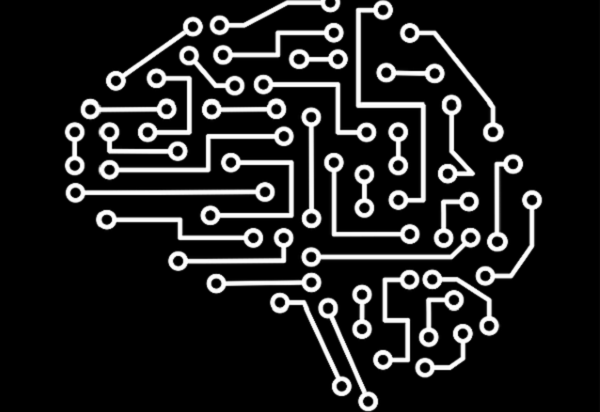As a growing number of organisations integrate digital technologies into all aspects of their business, digital transformation has come to be regarded as the means to increase the effectiveness of business operations and customer relations. It has helped organisations deliver quality products, meet customer requirements, perform better financially, and stay ahead of the innovation curve. To transition and emerge as a more digitally-mature organisation requires not only strategy, digital culture and tech infrastructure, but also the most critical component of all — a highly skilled and digitally savvy workforce.
Here are the 10 most sought-after skills your organisation’s tech talent needs to be equipped with to support the digitalisation process.
1. Agile mindset
The digital age emphasises an agile mindset that is not anchored to a loop. This trait promotes multifariousness in terms of handling different challenges that may arise concurrently. It focuses on dissecting tasks into smaller milestones that are easy to conquer. This approach reinforces easier scrutinisation that keeps the goal in sight.
2. Cybersecurity
Data is crucial to all organisations and jeopardising its sanctity can affect businesses in multiple ways. A fraudulent mail purportedly routed through an esteemed organisation is all it takes for an employee to fall prey to a phishing trap. Any unsolicited link can expose a company’s entire network to cyber threats directed at extracting priceless data. Cybersecurity has assumed even greater importance in an era wherein hackers are, unfortunately, actively using sophisticated tools to carry out malicious cyber-attacks, leveraging global crises.
3. Analytical/data-driven mindset
According to the IBM Marketing Cloud study, 90 per cent of the data on the internet was created in the period since 2016. Hence, there is no dearth of data for companies to access each day. However, the challenge is that they fail to draw actionable insights from the massive datasets available at their disposal. Today, organisations require a skilled workforce that not only understands data by analysing it, but also utilises it to make better business decisions. Data being supreme, a wide variety of industries and jobs are bound to become more data intensive. Hence, data literacy must continue to advance.
4. New media literacy
Social media presence has taken centre stage for survival of businesses in this digital age. As multiple communication channels sprout, so evolve the approaches to target customers. Curating an effective media strategy according to the media channel and the target audience is very important. For this, a deep understanding of the platform is crucial. For instance, both Twitter and Instagram will have their own sets of users and their unique modes of communication, as one dwells on formal statements while the other is informal and picture-based. Modern businesses require a workforce that can leverage social networks and applications to effectively communicate the brand’s offerings and announcements, and promote brand awareness amongst the masses.
Digital readiness requires content construction and delivery that effectively engages each of these systems. Download this research report to find out why Skillsoft’s digital transformation portfolio effectively drives digital readiness.
5. Virtual collaboration
Undoubtedly, the future is digital! Due to the current change in working norms, adopting ‘digital’ has been the go-to plan for many businesses. Leveraging effective tools and techniques suitable for business operations that keep the entire workforce on the same page is essential in the new normal. Work will transcend boundaries and organisations will continue to operate irrespective of the official premises. Therefore, a mix of tech infrastructure, along with the knowhow can ensure business continuity in the long run.
6. Passion for continual learning
Upskilling and reskilling will hold priority for organisations, as there will be an inclination towards hiring talent with diverse skill sets. And why not? The ever-evolving digital space demands that an employee stay abreast of the latest technology. Quick learners and even those with a zeal to learn, adapt, and grow with newer trends will have an edge over a thousand others in the future.
7. Design thinking
Design thinking requires the individual to deep dive into the customer’s wants and explore every stratum of possible solutions. The client may exhibit refinements that they wish to see in the end-product. It is the responsibility of the leader to scout implementable solutions that escalate client retention. The team leader must be able to formulate plans that contribute to customer satisfaction in the longer run.
8. Customer-centric orientation
The consumer is what drives the company to innovate and bring quality products to the market. The customer is the utmost priority and should be kept in cognizance while devising a new product. The team should meticulously strive to unravel the problems faced by the consumers and work on tactics to eradicate them.
9. Computational thinking
As more organisations ride on AI and Deep Learning technologies, this skill has specially attained a superior demand. It is all about differentiating useful data and deriving actionable insights from it. In short, this attribute requires the employee to draw a conclusion from the accumulated data. The information should be used to formulate concepts that could be the next big move in the foreseeable future. Data-based reasoning requires meticulous efforts and patience along with a deep understanding of AI-driven technologies.
10. Cross-functional dexterity
Though cross-functional dexterity takes time to achieve, it should, however, not deter any individual’s resolve to master it. The approach helps mitigate the dilemma faced while operating in non-experience projects. The employee should be able to devise a plan of action and cycle between multiple roles to provide effective solutions.




5 Comments
This Article is very useful to us thank you for sharing this information
Thank you for sharing this information
Nice article
Thank you for good information
A must-read for anyone looking to enhance their digital skills and stay competitive in today’s job market. Thank you for sharing such valuable insights!